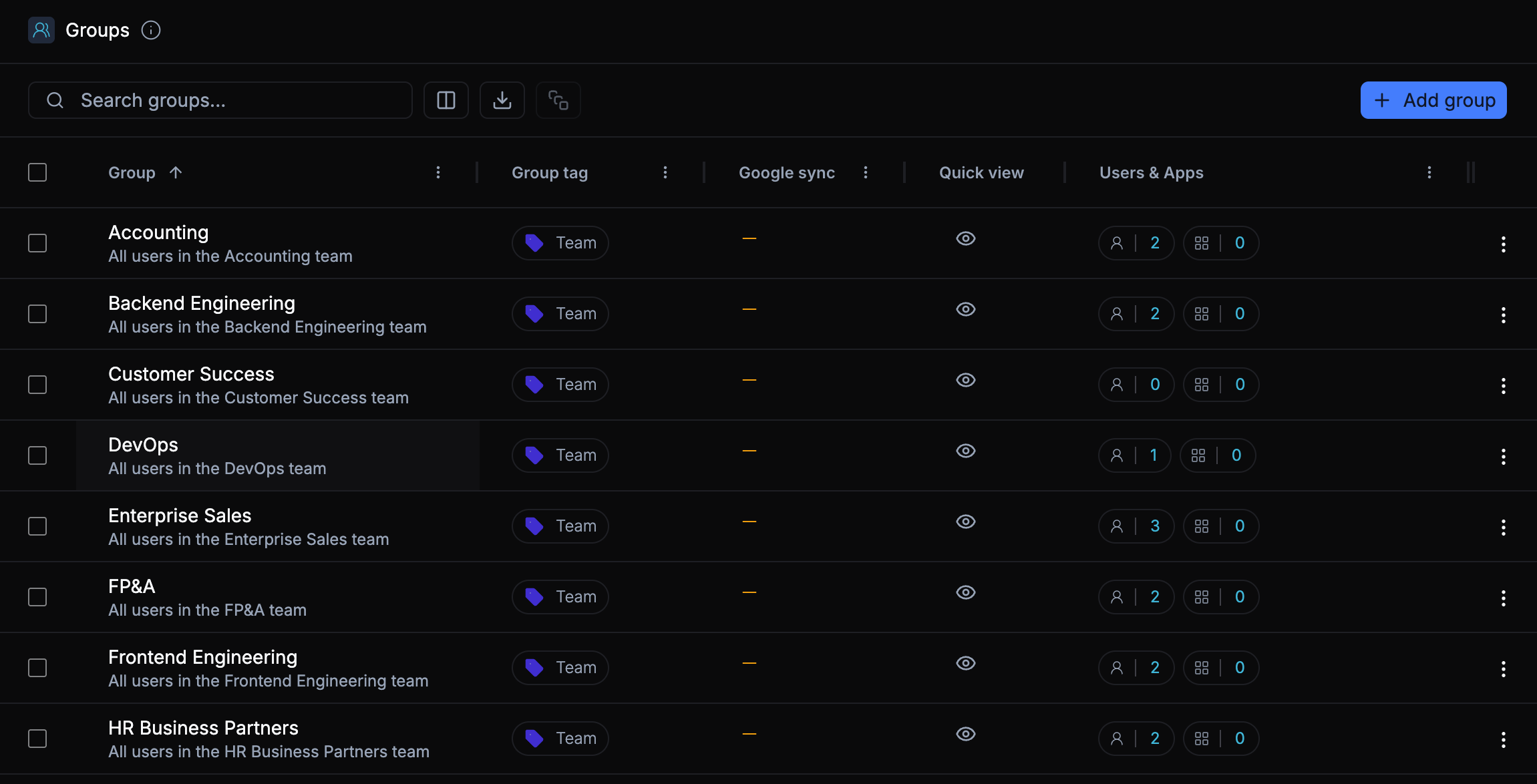Overview
Teams are now available in ShiftControl, giving you a flexible way to organize people based on how your company already works. Different organizations use Teams differently — some treat them like sub-departments, some use them for functional groupings, and others use them for regional or segment-based structuring.
No matter how you define them, Teams give you a consistent, single-membership attribute that can sync cleanly from your HRIS and power Groups, assignments, and automation.

How organizations use Teams
Different companies use Teams in different ways, so we’ve kept the concept flexible:
- As sub-departments inside a larger department (for example Engineering → Backend, Frontend, DevOps)
- As segment based groups (for example Sales → Enterprise, SMB, EU, APAC)
- As function specific groups (for example HR → Talent Acquisition, HR Business Partners)
To keep things simple and aligned with most HR tools, each person can only belong to one Team at a time. This matches how HRIS systems like BambooHR and HiBob usually model Teams or sub-departments.
Sync from HRIS or create your own
You can either:
- Sync Teams from your HRIS such as BambooHR or HiBob, or
- Create Teams directly in ShiftControl for orgs that don’t yet have them defined in HR
When Teams are synced, we keep the structure in sync so your people data stays consistent across systems.
Automatic Team groups for access management
Every time you create a Team, ShiftControl automatically creates a matching Group (for example a DevOps Team will also create a DevOps Group).
You can then:
- Use the Team Group to assign apps
- Sync the Group to Google and use it for email lists and calendar sharing
- Share docs and resources with the whole Team in one go

This works just like Groups for locations and departments, so it fits neatly into your existing setup.
Always in sync with name changes
If you rename a Team (for example from Customer Success to Client Success):
- The Team name is updated for all users on that Team
- The matching Group name is updated as well
- Everything stays in sync across ShiftControl and any connected directories
No more hunting for mismatched names between Teams, Groups, and user profiles.
Dynamic group rules powered by Teams
Teams are also available as a condition in dynamic Groups:
- Use the new Team attribute in your Group rules
- Choose operators like equals or not equals
- Select the Team you want to target
This makes it easy to build rules such as “add everyone in the DevOps Team to the DevOps Apps group” without manual management.
Check out the video below to see how it works: